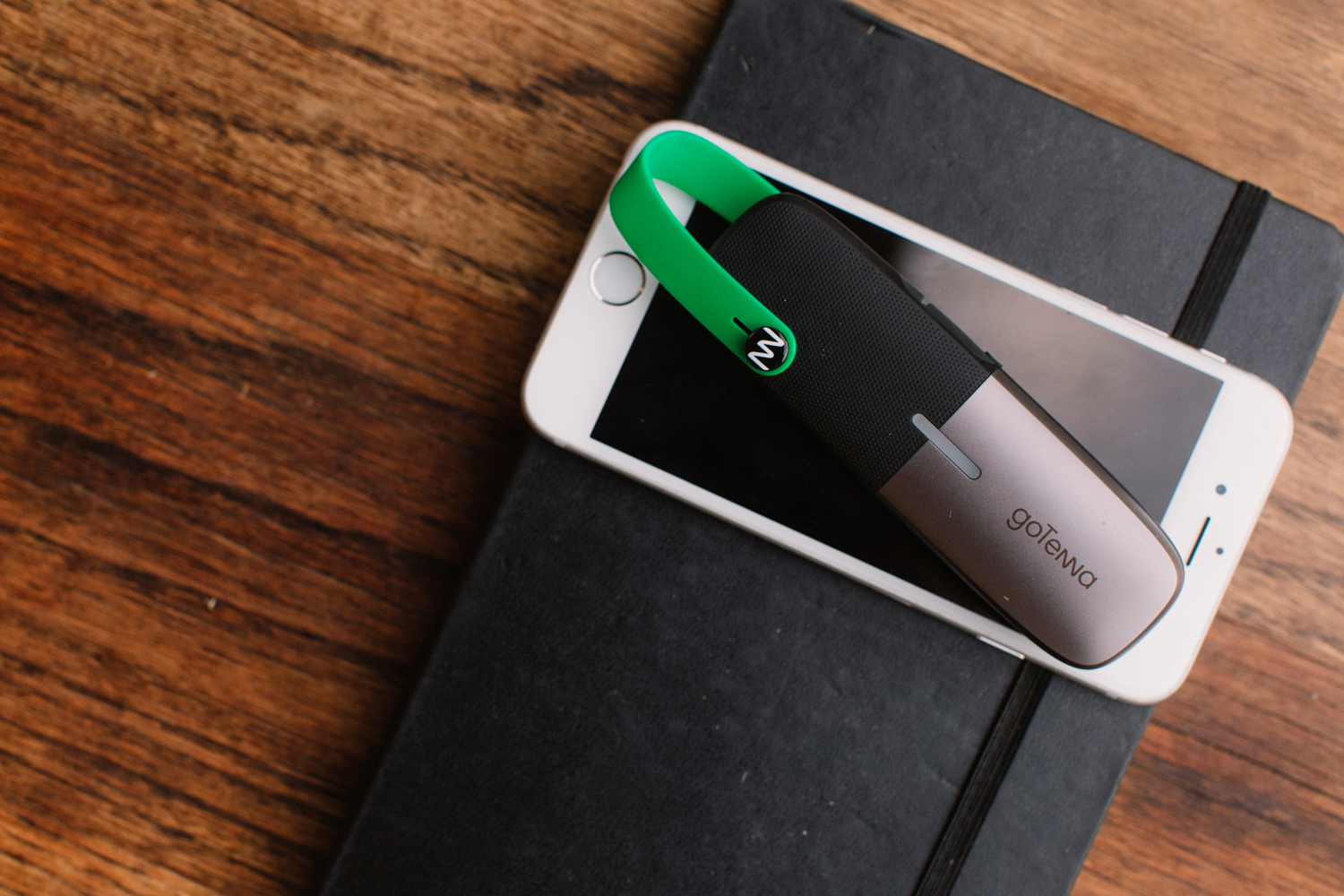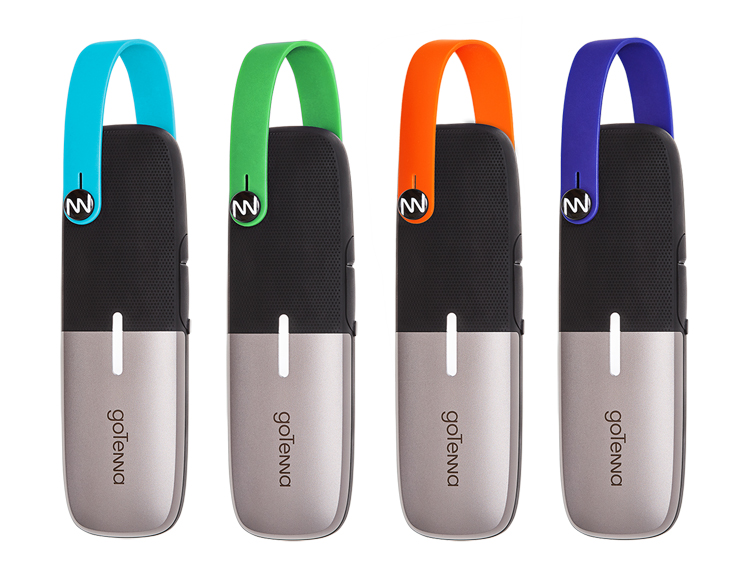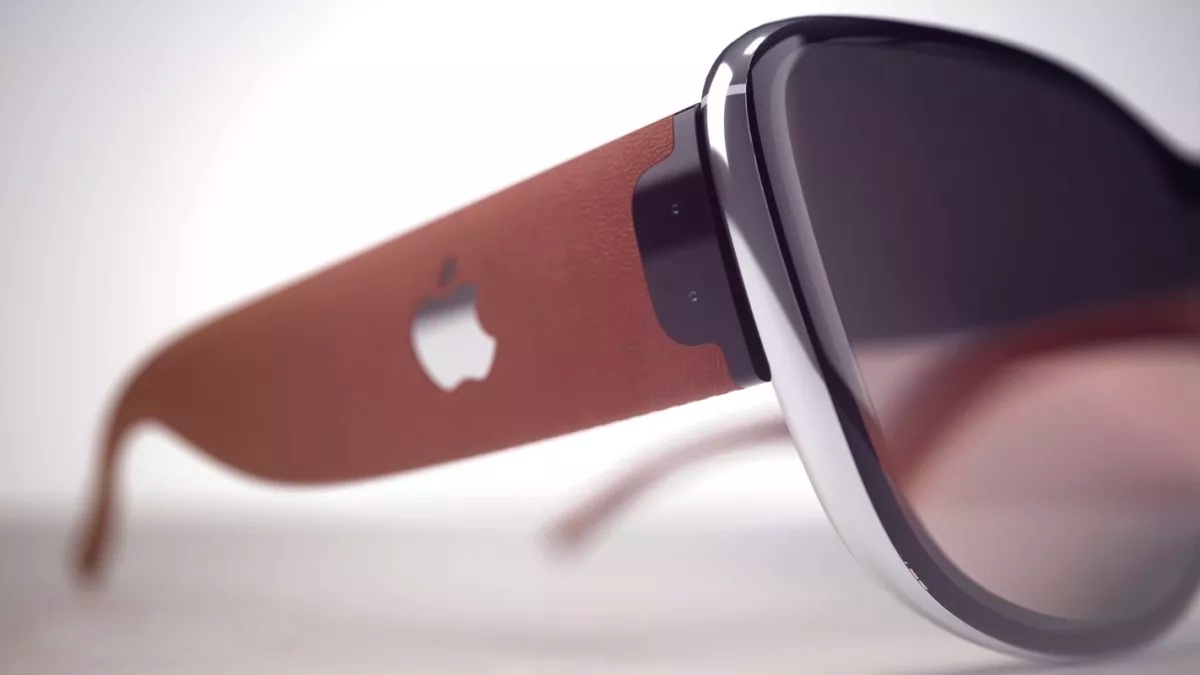This Antenna Could Triple Your Phone's Texting Range
GoTenna Mesh, a new version of the antenna that turns your phone into a walkie talkie, introduces a new mesh networking feature that promises to extend the add-on's range.
Since it started shipping last fall, GoTenna has been in the business of letting you stay connected with others even when there's no network to connect to. Now, a newly announced version of the portable antenna that essentially turns your phone into a walkie-talkie adds a mesh networking feature that promises to substantially expand its range.

Like the first GoTenna, the new GoTenna Mesh pairs with an Android or iOS phone over Bluetooth, letting you send text messages and your location to another GoTenna-toting friend. But this version, available for preorder at $129 for a set of two starting today (Sept. 28), also offers mesh networking, essentially turning other GoTenna users into waypoints to extend the reach of your encrypted messages to recipients who might be beyond the GoTenna's standard range of one mile in congested areas and three miles in open terrain.
"You can double or triple your range by hoping onto a mesh network of other users," GoTenna co-founder Daniela Perdomo told me during a preview of the GoTenna Mesh, which will cost $179 for a set of two when it starts shipping later this year.
MORE: Best Portable Chargers and Battery Packs
I've had a chance to use the original GoTenna, which will remain on sale at a new price of $149 for a set of two. I've found that it comes in handy on hikes in remote areas with either weak or non-existent cellular signals for staying in touch in case someone whoever I'm hiking with lags behind or wants to explore a different direction. If we've each got a GoTenna paired to our phone, we can reach each other via text message or beam our current location. The device also comes in handy as part of a disaster preparedness kit or if you're in a crowded venues — stadiums, say, or music festivals — where conventional networks are bogged down by traffic.
The new GoTenna Mesh continues that point-to-point communication but augments with mesh networking. It's similar to the approach router makers are taking in which coordinated devices can extend the reach of Wi-Fi in your home. The difference, Perdomo points out, is that there's no external power for the GoTenna Mesh, making it the first completely off-grid mobile mesh network device for consumers.
To reap the full benefits of mesh networking, though, multiple people need to use the device, with Perdomo conceding that the new GoTenna "gets more useful the more people have it." Still, the ability to conduct encrypted point-to-point text conversations with individuals or groups may be incentive enough to buy the device, while GoTenna's mesh network potential expands over time.
Sign up to get the BEST of Tom's Guide direct to your inbox.
Get instant access to breaking news, the hottest reviews, great deals and helpful tips.

GoTenna made some other changes with its new mesh product. At 4.2 x 1.3 x 0.9 inches, the new version is shorter than the 5.8 x 1.0 x 0.5-inch original, which Perdomo thinks will make users more inclined to carry it around. GoTenna Mesh will also go on sale outside the U.S.
GoTenna is also launching a new subscription service called GoTenna Plus. Available for $9.99 a year for the next 90 days, the service gives users access to topographical maps. (GoTenna users are able to download basic maps for free.) GoTenna Plus features group delivery confirmation receipts, automated location tracking and sharing with trusted contacts and a network relay feature that lets off-the-grid GoTenna users send SMS messages via in-range GoTenna users who happen to have a network connection. After the 90-day introductory rate, GoTenna Plus will cost $29 a year.
Philip Michaels is a Managing Editor at Tom's Guide. He's been covering personal technology since 1999 and was in the building when Steve Jobs showed off the iPhone for the first time. He's been evaluating smartphones since that first iPhone debuted in 2007, and he's been following phone carriers and smartphone plans since 2015. He has strong opinions about Apple, the Oakland Athletics, old movies and proper butchery techniques. Follow him at @PhilipMichaels.

